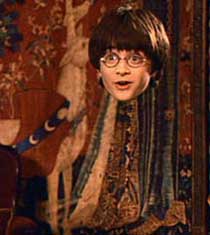 |
| Raymond Williams |
The late 19th century and early 20th century format for inventions could be illustrated from Williams conclusion of technology, as effects of human intention guided by social needs, purposes and practices. This format continues to bear striking resemblance to the late 20th century and the world we live in today. For example, I can remember being in high school and hearing from my teachers that many of the world's new technology originates from science fiction novels, but are created for "current" needs. Technology that was proposed in books such as Star Trek, and Star Wars can be seen to be coming true today.
Here are just five inventions we owe to science fiction (from this website):
1) Electronic Book Readers
2) Wireless Tracking Monitor Bracelets
3) Light Sculptures
4) Networked Electronic Voting Machines
5) Computerized Language Translation Software
One example that I love, from one of my favorite book series, Harry Potter, inspired technology that the U.S Army is inventing right now, called an invisibility cloak. If anything, history, and series of events like designing technology originating from novels, tells us that while some inventions are created accidentally, most are foreseen (as Williams states) in human imagination or are created out of necessity, and are constructed when the technological means are available. I've heard from many teachers that the future is essentially governed by science fiction novels, which interestingly coincides with Williams view that technology is "foreseen". This idea in itself is an immense and fascinating concept to contemplate.
 |
| Possible Invisibility Cloak Technology |
 |
| Screen Capture from Harry Potter and the Sorcerer's Stone |
I thought Williams consideration of technology and society was commendable because he united the two thoughts of technology, technological determinism and symptomatic technology. But while he characterized technology as the effect of human intention, he also recognizes but simultaneously glosses over accidental inventions/discoveries that have altered our world today, such as penicillin, radioactivity and plastic. Perhaps Williams would argue that these discoveries nevertheless contained an intention to discover, and would then correspondingly agree with his thesis. However, William's thesis would be a lot stronger if he were able to account for these accidental discoveries more adequately if he actually discussed them as results of intent, instead of glossing over them.
Today, television is being used as an artistic medium, which is a far cry from it's initial objectives of a mass media communications device. Film genre's categorize narrative elements of films, and the experimental film faction is quite a, for the lack of a better word, unique result echoing from the invention of the television. After viewing William Wegman's short video's, including Deodorant and Crooked Finger, I questioned his intentions for making the videos, as well as his intentions for calling them "art". While silly and sometimes amusing, they didn't convey any humanistic truths to me, weren't beautiful, and were not significant, to use all the available definitions of art. This was true of the videos watched in class, but upon viewing his photographs of his dog Man Ray, I could begin to understand why he is considered an artist:
 |
| "Puppies" by William Wegman |
 |
| "Hansel and Gretal" by William Wegman |
 |
| "On Set" by William Wegman |
The photos, unlike his videos, conveyed artistic conception and thought, and demonstrated talent.
Along the same vein of Wegman, the artist Anthony Goicolea utilized video as a tool for artistic expression. The video Amphibians was a very different use of the medium than Wegman's approach. Goicolea's video's followed more of a conventional plot and character design than Wegman's, but is still considered an experimental piece because it places the viewer in a more thoughtful and active relationship to the film than mainstream films. I appreciate the effort put forth of Wegman and Goicolea's films, but will abstain from placing an opinion on the experimental film genre until I see more films along the line of Stan Brekhage, because I can actually think of his films as being art.
Along the same vein of Wegman, the artist Anthony Goicolea utilized video as a tool for artistic expression. The video Amphibians was a very different use of the medium than Wegman's approach. Goicolea's video's followed more of a conventional plot and character design than Wegman's, but is still considered an experimental piece because it places the viewer in a more thoughtful and active relationship to the film than mainstream films. I appreciate the effort put forth of Wegman and Goicolea's films, but will abstain from placing an opinion on the experimental film genre until I see more films along the line of Stan Brekhage, because I can actually think of his films as being art.

















